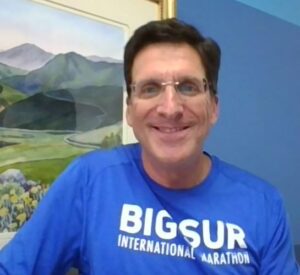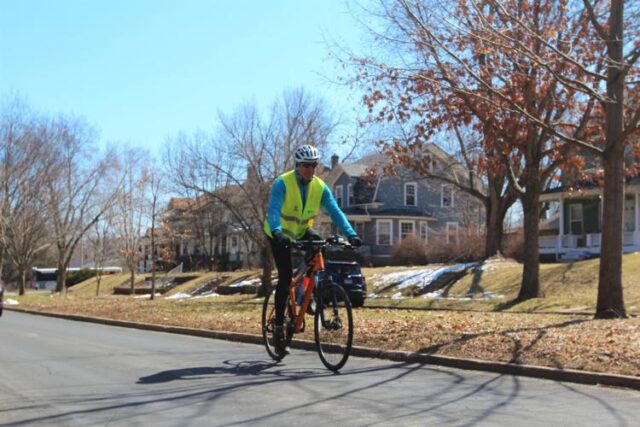Veteran race directors of larger races, particularly marathons and half marathons, are likely familiar with the importance of course certification and may even know a bit about the process. They understand the importance their entrants place on an accurate course distance in order to compare their performance to other races and maybe qualify for another race like the Boston Marathon or the Olympic Marathon Trials. Course certification is a box most larger races check then move on to other, perhaps more pressing, items.
A “set and forget” attitude about course certification is understandable. But even the largest and most important races can make mistakes in this important area. Several recent stories about courses coming up short or long and potential record performances being negated amplify the need to perhaps add a few more course measurement boxes to check to help stay out of the headlines.
Getting a course measured for certification is not difficult but it does take a little planning and research. Here is a quick review of the process:
- · The measuring is done on a standard bicycle fitted with a calibrated, mechanical counter on the front wheel.
- The measurer calibrates the bicycle before and after each measurement session on a set course that has been carefully measured with a steel tape or laser (usually 1,000-feet or 300-meters long), does some basic math to determine how many counts on the counter equals a mile, a kilometer, and the total desired course distance. The measurer also adds a 1/10th of 1 percent “short course prevention factor,” or a little more than five feet each mile. This is done for all certified courses.
- · The measurer then rides the course as it will be set-up and available to the runners on race day. This often means riding very early in the morning when traffic is lighter and/or having a police escort.
- · The measurer aims to ride the shortest possible route that will be available to runners, cutting the tangents by straightening out corners, etc. Wherever the runners can go on race day, the measurer will try to go with his bike. This is why a police escort, especially for an urban course, is very valuable.
- · The measurer usually needs to know where they can adjust the course to get the distance spot on: can the start or finish be moved? What about a turn-around? Can a short out-and-back be added? What other options are available?
- · Computer mapping programs are helpful when looking at options but they are usually short by one percent or so when the course is actually measured. If I am measuring a half marathon, for example and the race director has sent me a link to the course on an online program like Mapmyrun.com, I ask for the 13.10938 half marathon distance to be more like 13.25 miles on the mapping program.
- · Certified courses, measurers, and other course measurement information are available on the resources section of the USA Track and Field website, https://www.usatf.org/resources/course-certification.
A few other notes, some particularly important for half marathons and marathons:
- · All courses expire after 10 years and need to be remeasured and recertified even if there have been no changes to the roads.
- · Half or full marathons that want to be affiliated with World Athletics, AIMS (Association of International Marathons and Road Races), or the Abbott World Marathon Majors Age Group standings are remeasured every five years and, currently, must be measured by an A or B measurer. Find out more details about World Athletics course requirements, including record eligibility, at https://www.worldathletics.org/records/certified-roadevents.
- · “In route” splits at longer races can be certified and eligible for records. For example, a measurer can certify the 30 km mark in a marathon course or the 15 km split in a half marathon. If there are USATF officials and timing devices at those locations, and the race meets other record criteria, marks set at those splits can be eligible for age group, national, or even world records or bests.
- · Measurers set their own fees and expenses. There are no industry standards, minimums, or maximums. If you want to hire someone to do the work, be sure and understand their complete rate structure in advance including any travel and expenses as well as payment policies (some may want advance payment; others will invoice when they finish and submit the map and paperwork).
- · It’s a good idea, if possible, to contract with the measurer to refresh the mile marks before the race and to work with the course operations team, traffic control company, etc., to make sure the course is set up correctly. Often a measurer will ride in a lead vehicle to attest that the course was run as measured. It’s customary to compensate a measurer for this extra work.
- · For U.S. runners to qualify for the Olympic Marathon Trials, marathon and half marathon courses need to be both certified and have a USATF sanction. Some runners have run trials-qualifying performances at races that were not USATF sanctioned so their mark didn’t count. Even if a marathon or half marathon race uses the Road Runners Club of America (RRCA) or other source for participant and event liability insurance, they should secure a non-insurance USATF sanction to make sure athletes can qualify for the Olympic Trials or set national or age group records.
- · If the course has to be changed at the last minute due to construction or an incident like a water main break, be sure to notify the original course measurer. They may be able to make the change quickly so participants are still able to run a certified course and set a record.
I hope this article has provided some useful information about the importance of course measurement some insight into the process. Additional web searches will bring a ton more data. I think you will find the measurement community very welcoming and helpful: after all, we believe what we do is a valuable part of the race experience and we want to help your race succeed.
Good luck and safe running and race directing.
 Doug Thurston is a World Athletics/AIMS Level A measurer and has certified more than 100 courses throughout the country. He has also been a race director for 40 years managing races large and small including the Tulsa Run, Columbus Marathon, and the Big Sur International Marathon. He continues to measure courses and consult and assist with course and race operations from his home in Santa Fe, New Mexico. He can be reached at tallrunnerdoug@gmail.com.
Doug Thurston is a World Athletics/AIMS Level A measurer and has certified more than 100 courses throughout the country. He has also been a race director for 40 years managing races large and small including the Tulsa Run, Columbus Marathon, and the Big Sur International Marathon. He continues to measure courses and consult and assist with course and race operations from his home in Santa Fe, New Mexico. He can be reached at tallrunnerdoug@gmail.com.
A Note About What Your Runners Will See on Their GPS devices: GPS devices are NOT used to measure and certify courses. They are worn by many of your runners, though, and, in my experience, GPS devices almost always over-estimate the race distance by at least one percent, or about 50 feet per mile. For example, readings of 13.25 miles or more for a half marathon, or 26.5 miles for a full marathon are typical. Besides their wearable measurement technology being off a bit, most runners also don’t run the shortest line around the course and often add a little here and there when they get a cup of water, use the restroom, or because of course crowding. I always have a Garmin GPS unit on my handlebars when I measure a course. It’s handy to let me know when I’m coming up to a mile marker and provides good waypoints for mile markers. But 99 times out of 100, it will show me coming to a mile before the actual distance on the mechanical counter. You can find examples of language you might want to use to explain this to curious runners at http://legacy.usatf.org/Products-/-Services/Course-Certifications/USATF-Certified-Courses/Certify-Your-Course/Statement-on-GPS-Use-by-Runners.aspx. And here is a second article with additional great information: https://runningonhappy.com/2017/06/gps-accuracy-race-course-distances/.

